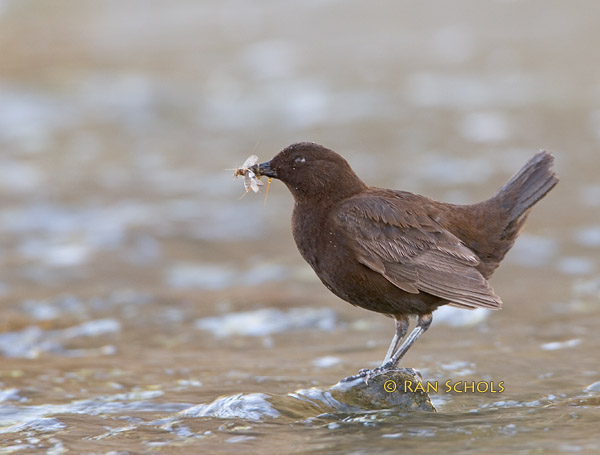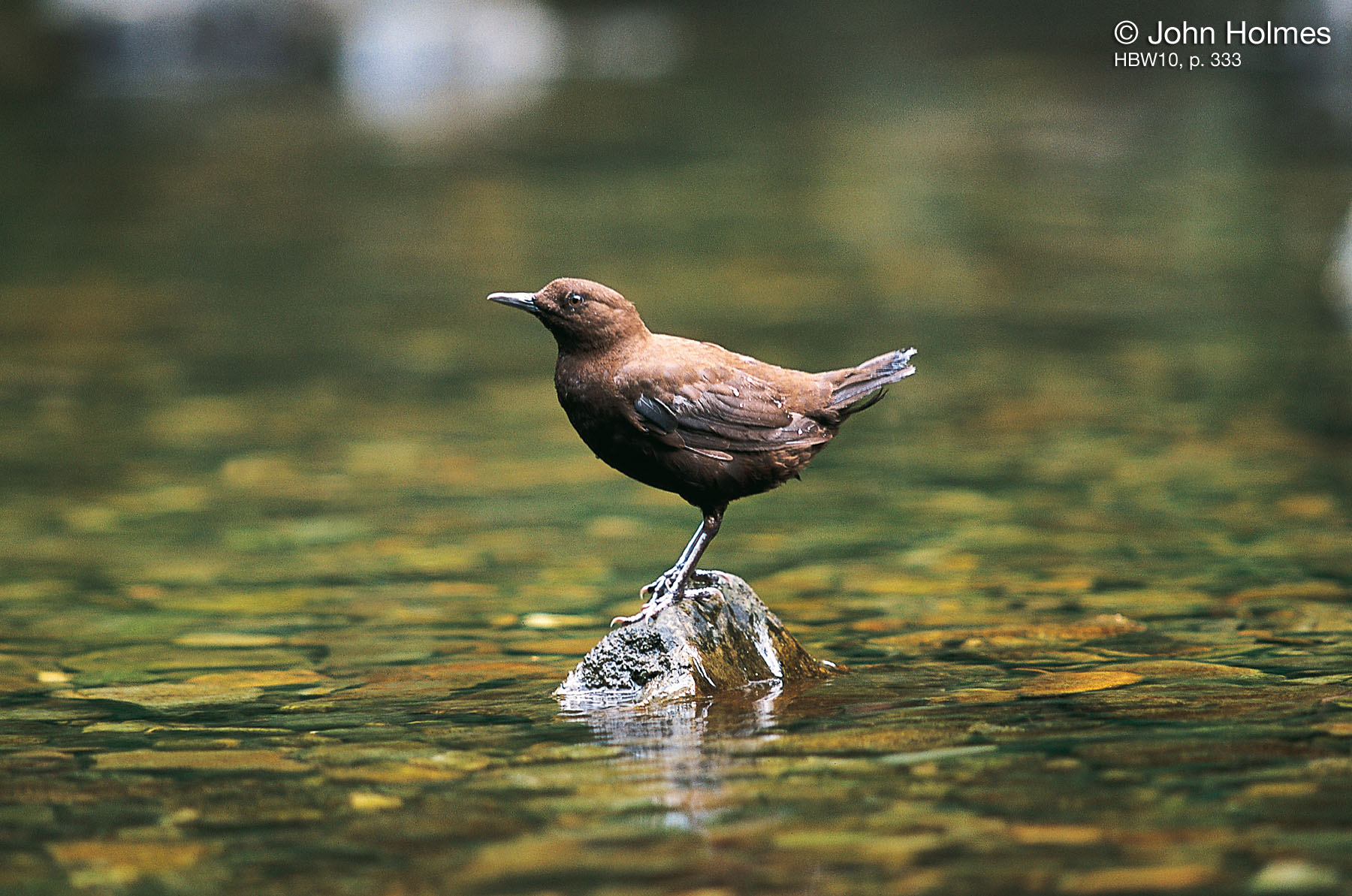
Cinclus pallasii
TAXONOMY
Cinclus pallasii Temminck, 1820, “Crimea,” actually Okhota
River, eastern Siberia.
OTHER COMMON NAMES
English: Asian dipper, Pallas’s dipper; French: Cincle de Pallas;
German: Flusswasseramsel; Spanish: Mirlo Aquбtico Castaсo.
PHYSICAL CHARACTERISTICS
8.3–9.1 in (21–23 cm); weight (sexes not distinguished) 2.3–3.1
oz (66–88 g). Plumage uniformly dark brown.
DISTRIBUTION
Central Asia from Afghanistan, Kazakhstan to Tibet, Nepal,
North Burma, North Vietnam; disjunctly northern India,
Siberia to Kamchatka, Japan from Kyushu northwards. Over
most of its range largely sedentary, in some cases moves to
lower altitudes in winter; some apparent migration from northern
edge of range in China.
HABITAT
Rushing mountain streams and shores of mountain lakes.
BEHAVIOR
Much as other members of the genus; spends all of its time in
close proximity to fast-flowing water, diving and swimming down
to the bed. Bobs and curtsies in a manner similar to the Eurasian
species. Song is a loud bubbling warble; call a sharp “zit-zit.”
FEEDING ECOLOGY AND DIET
Aquatic invertebrates, caddis fly and may fly larvae, etc., taken
mostly underwater.
REPRODUCTIVE BIOLOGY
Nest is spherical with a side entrance, the outer layer of moss,
the inner of rootlets and leaf-webs, usually located in crevices
in rock faces above flowing water; more rarely in artificial sites
such as bridges. Both sexes build. Eggs three to six, usually
five, incubation period 19–20 days, fledging period 23–24 days.
Probably mostly single-brooded.
CONSERVATION STATUS
Not threatened. Widespread and common; susceptible to habitat
degradation, but much of its range has very sparse human
HABITAT
ion.
SIGNIFICANCE TO HUMANS
None known.
Other popular Animals
Photo Gallery of - Brown dipper




 Animalia Life
Animalia Life